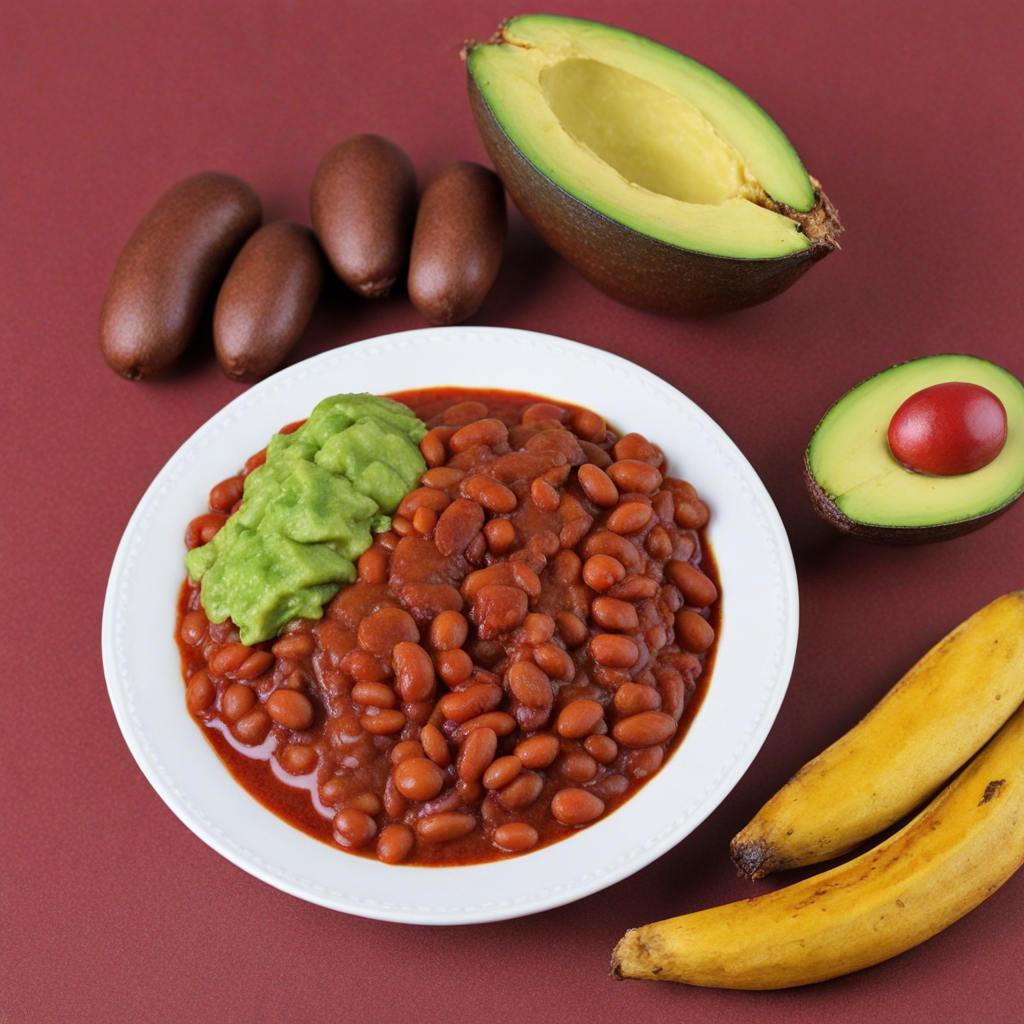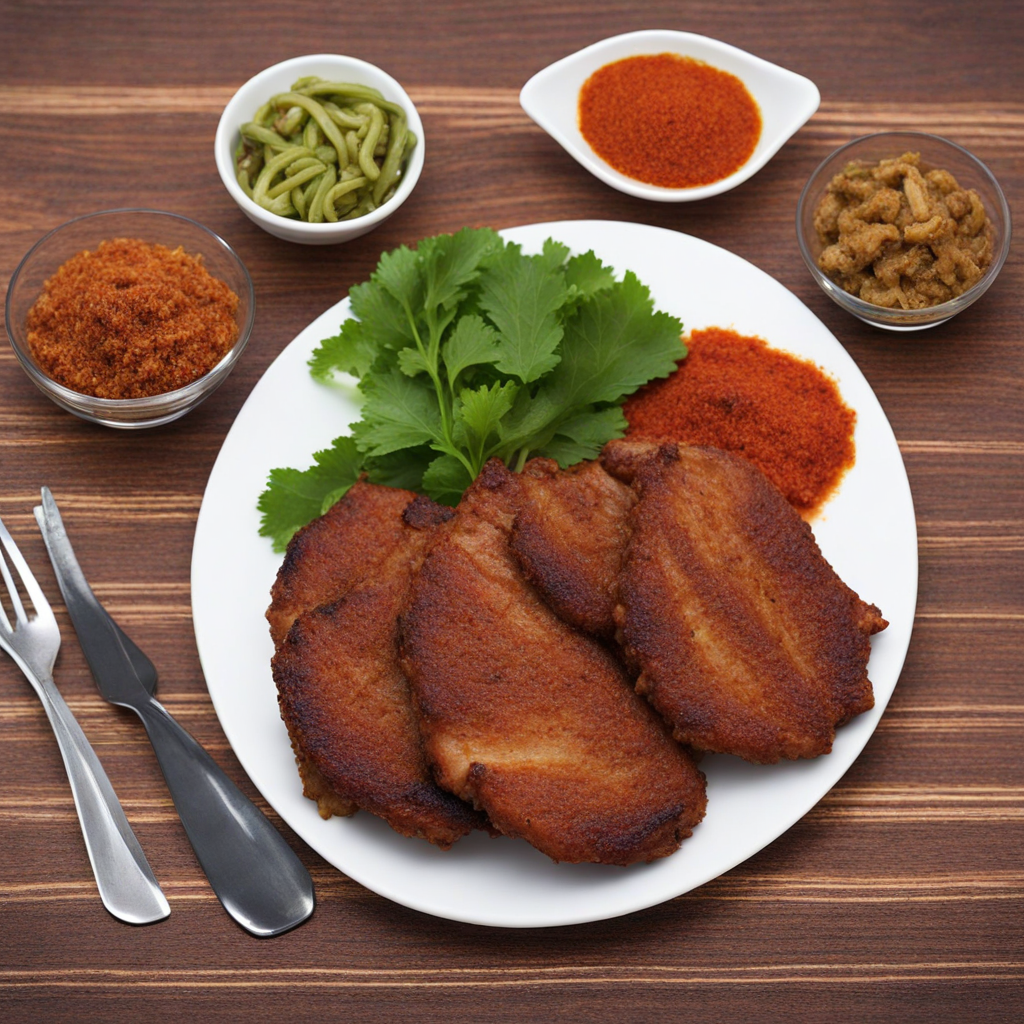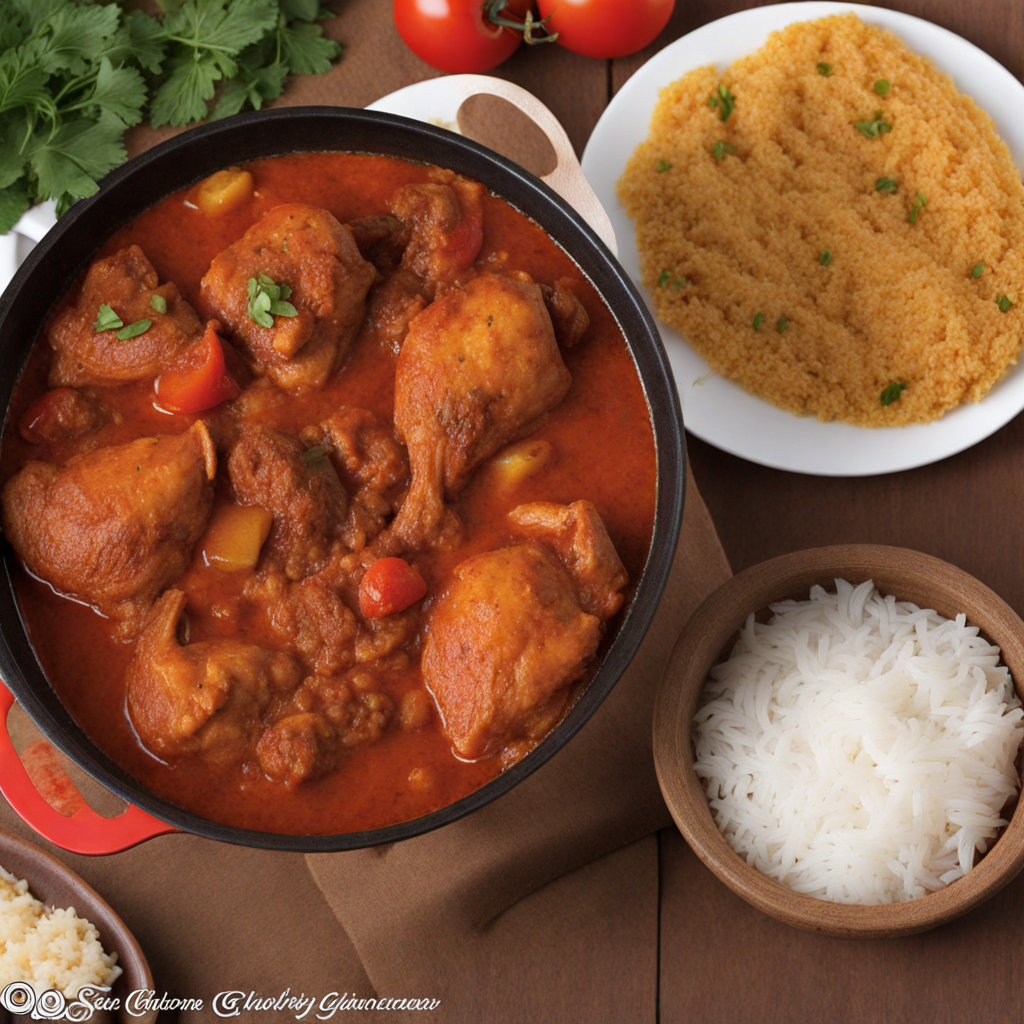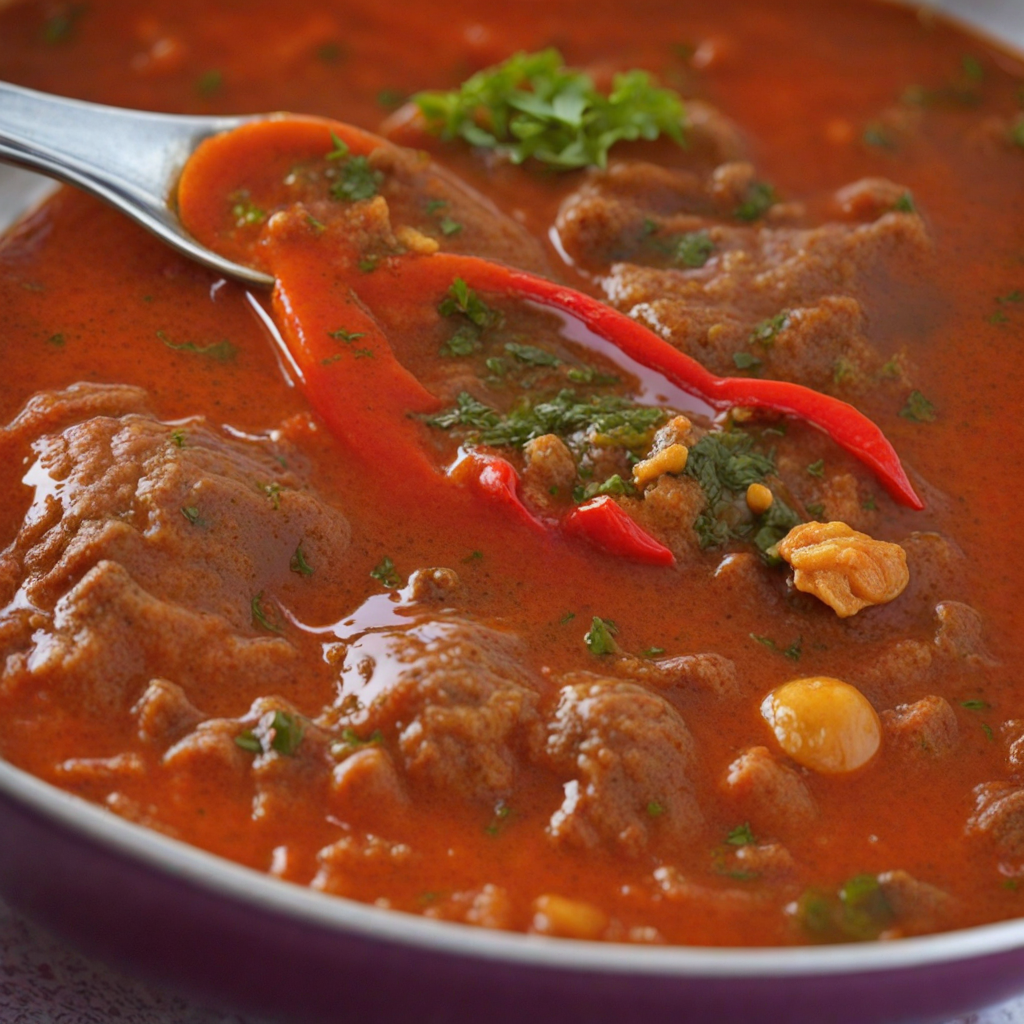Red Red
Red Red is a delightful and hearty Ghanaian dish that showcases the rich flavors and vibrant colors of West African cuisine. At its core, the dish features black-eyed peas, which are cooked until tender and then sautéed with a mouthwatering blend of spices, including onions, tomatoes, and a generous amount of palm oil. The use of palm oil not only adds a distinct richness but also gives Red Red its characteristic red hue, which is visually striking and appetizing. This dish is often served as a comforting stew, making it perfect for any meal of the day. Accompanying the black-eyed peas is typically fried plantains, which add a sweet contrast to the savory flavors of the stew. The plantains are sliced and fried until golden brown, providing a crispy texture that complements the softness of the beans. This combination creates a delightful balance of flavors and textures, with the sweetness of the plantains enhancing the earthiness of the peas and the spices. Red Red is often enjoyed with a side of rice or fufu, making it a filling and satisfying meal. Another enticing aspect of Red Red is its versatility. While the traditional version focuses on black-eyed peas, variations can include additional vegetables or proteins, such as fish or chicken, further enhancing the dish's depth of flavor. The spices used can also be adjusted to cater to personal tastes, making it a customizable dish for food enthusiasts looking to explore new culinary experiences. Overall, Red Red is not just a meal; it’s a celebration of Ghanaian culture and cuisine, inviting anyone who tries it to discover the warmth and richness of West African flavors.
How It Became This Dish
The Rich Tapestry of Red Red: A Culinary Jewel of Ghana #### Origins of Red Red Red Red is a beloved Ghanaian dish, renowned for its vibrant color, hearty flavors, and nutritional value. At its core, Red Red consists of stewed black-eyed peas, often served with a rich tomato sauce infused with spices and accompanied by fried plantains. The dish epitomizes the essence of Ghanaian cuisine, where ingredients are sourced from local markets, and cooking methods are passed down through generations. The origins of Red Red can be traced to the traditional agricultural practices of the Akan people, one of the largest ethnic groups in Ghana. Black-eyed peas have been a staple legume in West Africa for centuries, valued for their protein content and ability to thrive in the region's climate. The dish likely emerged as a way to showcase this nutritious ingredient, highlighting the importance of legumes in the diets of many West Africans. The name "Red Red" is derived from the vibrant red color of the tomato sauce, which is a key component of the dish. Tomatoes were introduced to West Africa during the Columbian Exchange in the 16th century, and their incorporation into local cuisine transformed many traditional dishes. The use of palm oil, an indigenous ingredient, further enhances the dish's richness and adds to its characteristic hue. #### Cultural Significance Red Red is more than just a meal; it holds cultural significance in Ghanaian society. It is often enjoyed during festive occasions, family gatherings, and community celebrations. This dish symbolizes togetherness and hospitality, as it is typically prepared in large batches to accommodate gatherings. Sharing a hearty pot of Red Red with family and friends fosters a sense of community, reflecting the communal nature of Ghanaian culture. In Ghana, food plays a vital role in social identity, and Red Red is no exception. The dish is enjoyed across various regions, each adding its unique twist based on local preferences and available ingredients. In the Greater Accra Region, for example, Red Red is often served with fried plantains, while in other areas, it may be paired with fufu or rice. This regional diversity highlights the adaptability of Red Red, making it a staple in both urban and rural settings. Moreover, Red Red is a dish that transcends socio-economic boundaries. It is affordable and accessible, making it a popular choice for both the wealthy and the less privileged. This democratization of food is integral to its cultural significance, as it reinforces the idea that good food should be available to all, regardless of status. #### Development Over Time The evolution of Red Red reflects broader changes in Ghanaian society and cuisine. In the past, traditional cooking methods involved time-consuming processes, with meals prepared from scratch using locally sourced ingredients. However, with the advent of modernization and urbanization, the way Red Red is prepared has undergone some changes. Today, while many still adhere to traditional recipes, convenience has brought about variations. Pre-packaged black-eyed peas, canned tomatoes, and ready-made spice blends have become increasingly popular, particularly in urban areas where time constraints are prevalent. Despite these modern adaptations, the essence of Red Red remains intact, with many Ghanaians still valuing homemade versions that honor their culinary heritage. The globalization of food culture has also influenced Red Red. As Ghanaian diaspora communities have spread across the globe, they have brought with them their culinary traditions. Red Red has gained recognition beyond Ghana's borders, often featured in African restaurants and food festivals worldwide. This exposure has not only popularized the dish but has also sparked interest in its ingredients and preparation methods, leading to a fusion of flavors as chefs experiment with international influences. In recent years, there has been a resurgence of interest in traditional foods and sustainable cooking practices. Many Ghanaians are returning to their roots, seeking out local ingredients and traditional methods to prepare dishes like Red Red. This movement is fueled by a growing awareness of the health benefits of traditional diets and a desire to preserve cultural identity in an increasingly globalized world. #### Ingredients and Preparation The preparation of Red Red is an art form that combines simplicity with flavor. The primary ingredients include black-eyed peas, fresh tomatoes, onions, garlic, and spices like chili pepper and ginger. Some variations may incorporate additional vegetables or proteins, such as fish or meat, depending on personal preferences and regional practices. To prepare Red Red, black-eyed peas are typically soaked and boiled until tender. Meanwhile, a flavorful sauce is made by sautéing onions, garlic, and tomatoes in palm oil, with spices added to create depth of flavor. The cooked peas are then combined with the sauce, allowing them to absorb the rich flavors. The dish is often served with fried plantains, which add a sweet contrast to the savory stew. #### Conclusion Red Red is a culinary treasure that encapsulates the heart and soul of Ghanaian cuisine. Its origins, cultural significance, and development over time reflect the resilience and creativity of the Ghanaian people. As a dish that bridges generations, Red Red not only nourishes the body but also fosters connection and belonging within communities. In a world that is increasingly homogenized, the preservation of traditional dishes like Red Red is vital for maintaining cultural identity. As Ghanaians continue to celebrate their culinary heritage, Red Red stands as a testament to the richness of their history, the flavors of their land, and the bonds that unite them. Whether enjoyed in a bustling Accra market or a family gathering in a rural village, Red Red remains a symbol of love, community, and the enduring power of food.
You may like
Discover local flavors from Ghana







